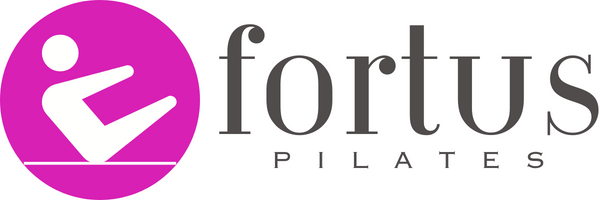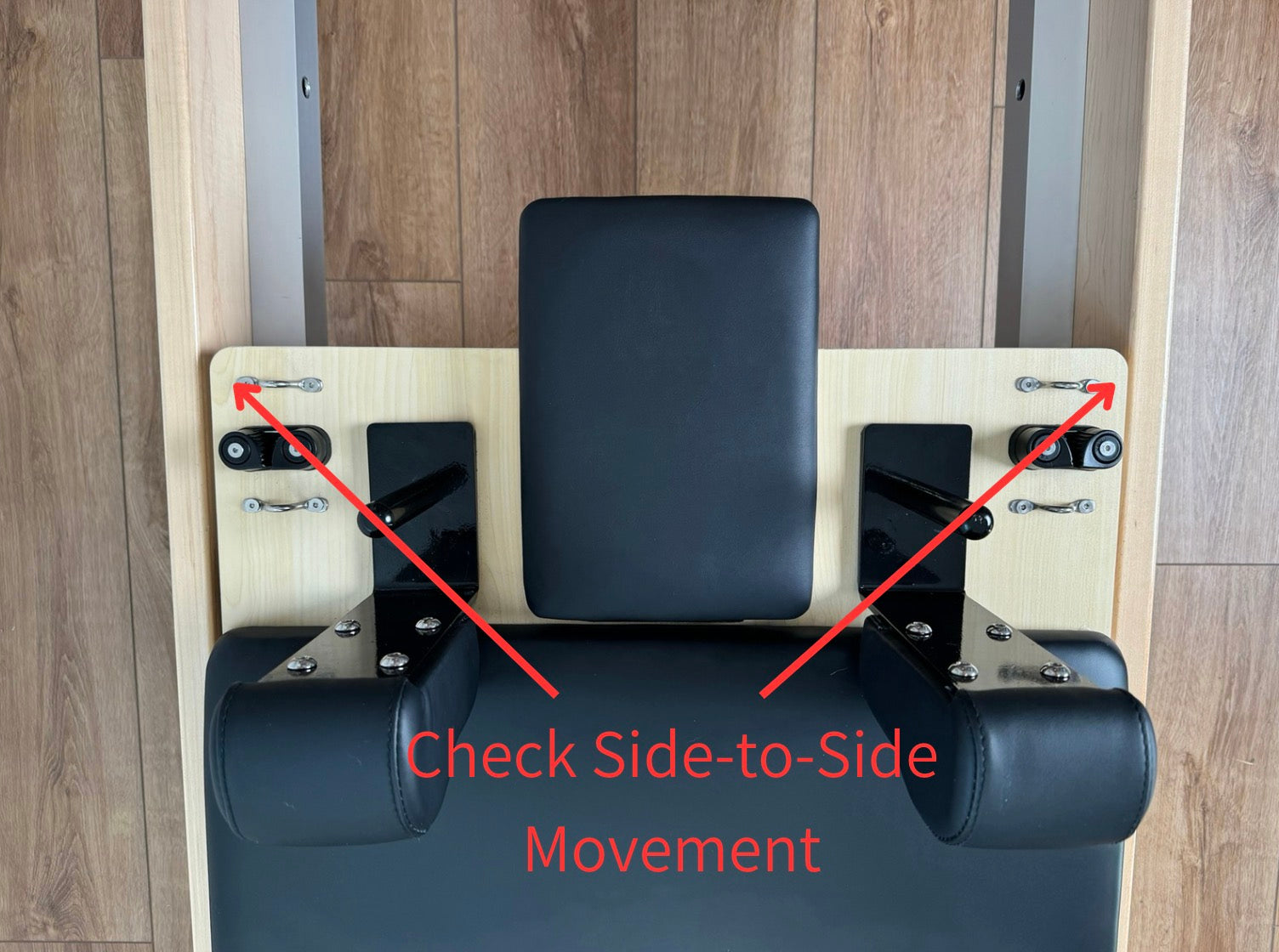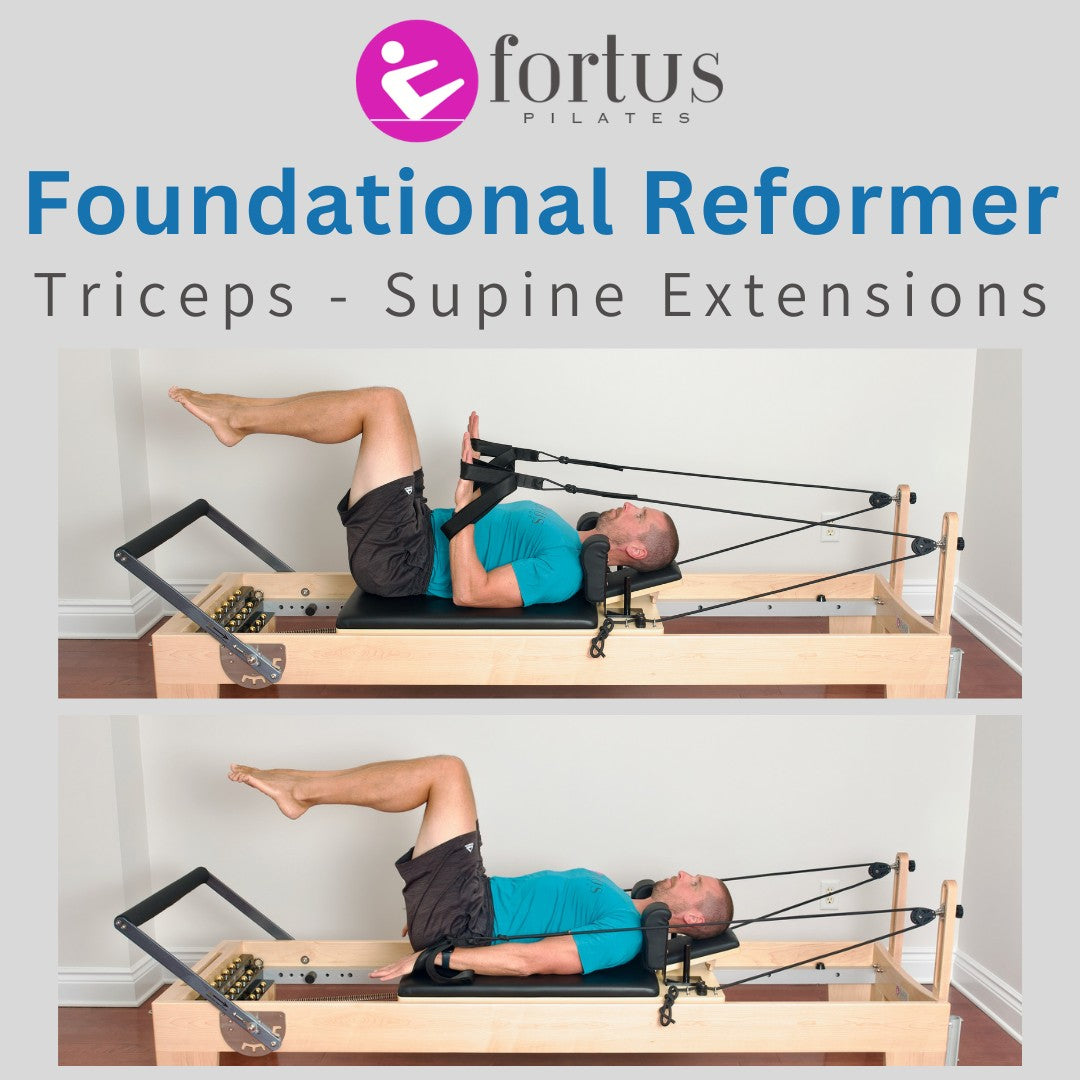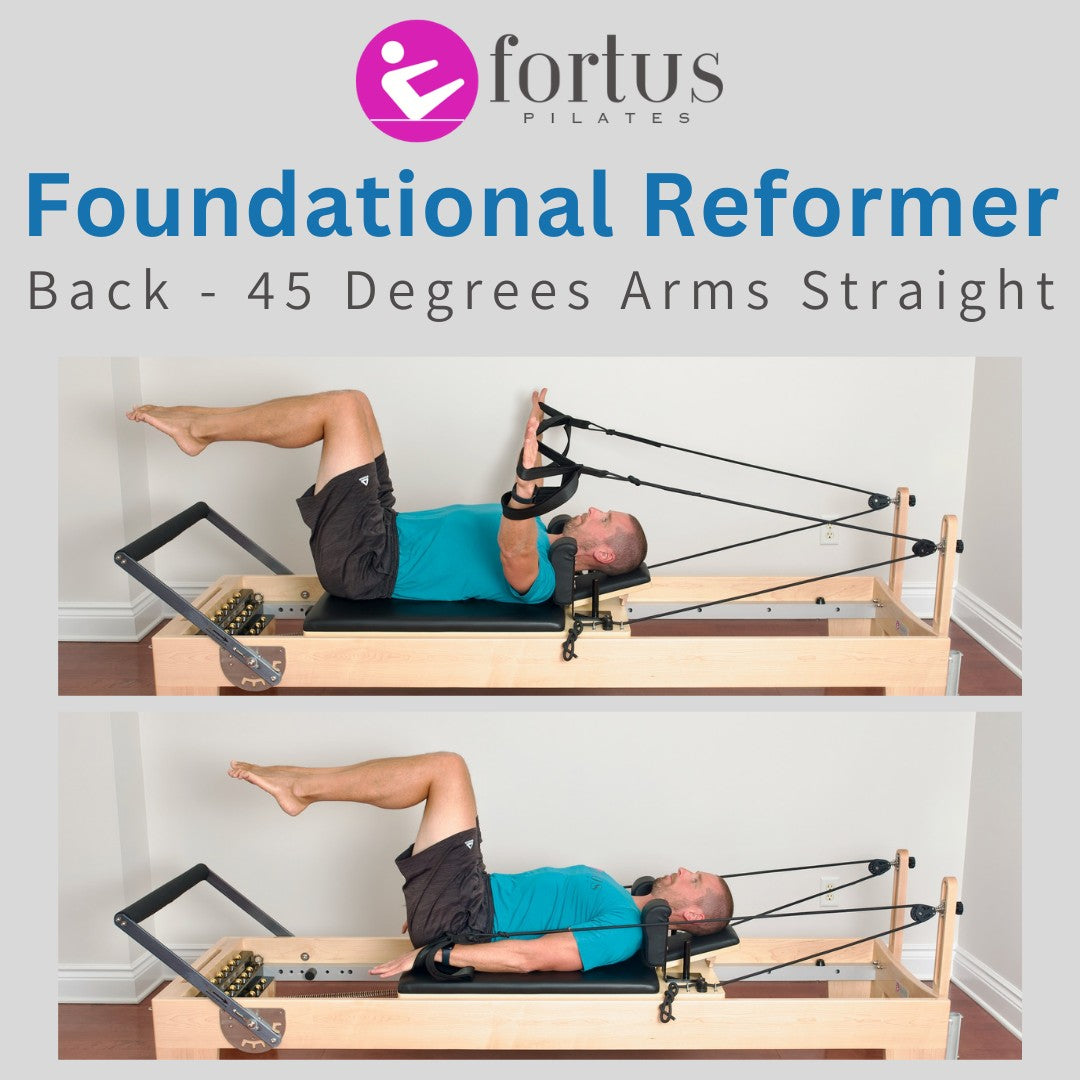
Summary
The Pilates Reformer Arches exercise focuses on strengthening the foot arches, calves, and stabilizing lower leg muscles. Participants position their feet with arches on the bar, challenging balance and control. This movement enhances foot strength, promotes calf muscle toning, and improves overall lower leg stability. It is especially beneficial for athletes, dancers, and those seeking to improve foot function and prevent injuries related to weak foot muscles or poor balance.
Purpose
- General warmup of ankle, knee, and hip joints.
- Strengthen ankle, intrinsic foot mucles, knee extensors, leg adductors, and quadriceps.
- Isolation of leg movement from pelvic movement.
- Increase ankle dorsiflexion range.
Reformer Setup
- Footbar elevated.
- Spring tension moderate to heavy.
- Carriage stoppers adjusted to allow knees to bend to 90 degrees.
- Headrest up.
Starting Position
- Supine on the carriage, tailbone centered, hands flat on carriage.
- Arches of feet on footbar, heels and toes together.
- Ankles flexed (dorsiflexion).
- Toes curl over the top of the footbar. Think of a bird griping a perch.
- Knees bent at 90 degrees.
- Pelvis and lumbar spine in neutral position.
- Knees and legs adducted (squeezing together).

Starting position.

Foot position.
Execution (10-12 Repetitions)
- On exhale, extend legs until legs are straight. Keep knees and legs adducted (pressing together). Avoid locking out knees completely.
- On inhale, bend knees until carriage returns to complete rest against the carriage stops.
- Maintain constant pace throughout entire movement.
- Ankles remain in dorsiflexion throughout movement. Feet and heels remain fixed in space.
- Toes remain curled over footbar throughout movement.
- All movement comes from the knee and hip joints. Specifically, the ankles do not release from dorsiflexion and the pelvis, and lumbar spine remain fixed.
- Feet stay together and knees stay pressing together throughout movement.

Position 1. Start.

Position 2. Press out.

Position 3. Return.
Common Mistakes
- Ankle dorsiflexion released during movement. Maintain feet and heels fixed in space throughout movement.
- Anterior or posterior pelvic rotation. Maintain pelvis in fixed neutral position.
- Lumbar spine arch changing. Keep lumbar spin in fixed neutral position.
- Distance between knees changes during movement. Maintain a knees and legs in adduction (pressing together) throughout movement.
Modifications & Variations
- Perform the first 5-6 repetitions at a slower pace, and the last 5-6 repetitions at a faster pace.
- To increase transverse abdominal challenge, reverse breath. Inhale on leg extension, exhale to return.
- After 10-12 repetitions perform small pulses in middle of range.
- If needed to avoid excessive internal rotation of the legs, place feet, knees, legs slightly apart. Feet, knees, and legs should stay parallel and constant distance apart throughout movement.




